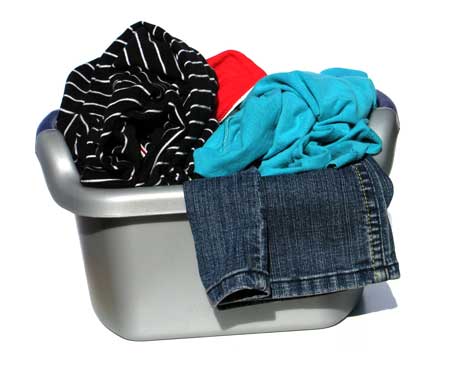Grandmother and former nurse Linda Sones sells organic cotton baby and children’s clothing and accessories, and natural, organic baby toiletries online at SonesUK.

I have written a number of posts about the benefits to both the environment and ourselves of buying organic cotton. I feel that some of these benefits are negated if, for the remainder of the garments life, it is washed in detergents and chemicals which are damaging to our environment and ourselves. So I would like to share with you some of the eco-friendly non-toxic methods of stain removal that I have researched. Some may have been well known to your grandmother and she may have passed them on, but some will be new. But I urge you to check labels and use your own judgement before you proceed willy nilly with these suggestions. One important tip to remember if you have treated a stain and put it through the wash is to check if it’s worked before you dry it. Once it has been dried it will be almost impossible to remove
For the removal of oil or fat stains, even tomato sauce if it is dry, try cornflour rubbed into the stain and left for about 20 minutes then brushed off with a soft cloth or brush. This may need several applications for a good result. Speed up the process if you wish by placing a paper towel above and below the treated stain and running a hot steam iron over it.
Stains from fruit, including wine and tomato sauce disappear when boiling water is poured over them in a bowl.
Ball point ink stains can be tricky. Soak in milk. It may take a while and need a top up but it does work. Apparently this also works on chocolate and even blood.
Rust stains can be cleared with application of a layer of salt and lemon juice squeezed over the top and then rubbed in.
Vinegar is the tops when it comes to multiple uses. For wine spots on cotton treat within 24 hours with white distilled vinegar applied directly to the stain and rubbed. Then clean in accordance with instructions on the label.
This next is not exactly stain removal but it is a good tip. To freshen baby clothes add one cup of white distilled vinegar to each load of baby clothes during the rinse cycle, it will naturally break down uric acid and soapy residue and leave the clothes soft and fresh. This treatment helps any clothes to rinse better it does not harm the fabric but will dissolve alkaline in soaps and detergents.
To remove chewing gum pour straight vinegar over it to saturate. This works even better if you heat the vinegar first. Another suggestion is to use basic hair shampoo (without inbuilt conditioner) on stains on washable materials, work it well into the fibres, but carefully if it’s delicate. Follow up with your usual wash.
One thing which is great for nappies and whites is natural sunlight which helps to bleach out stains but this is a summertime only solution here in the United Kingdom.
I hope that you will find some of these tips helpful.